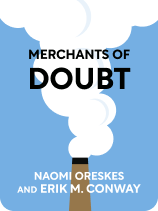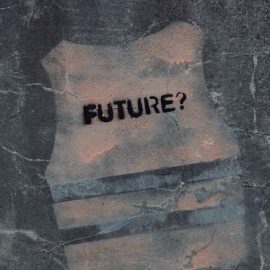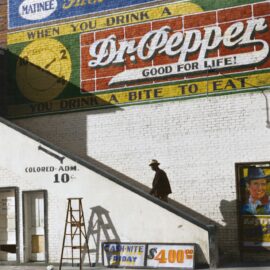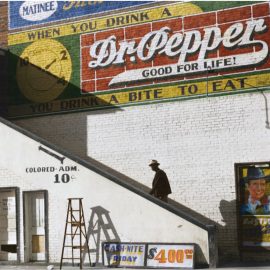

This article is an excerpt from the Shortform book guide to "Merchants of Doubt" by Naomi Oreskes and Erik M. Conway. Shortform has the world's best summaries and analyses of books you should be reading.
Like this article? Sign up for a free trial here .
Who are the merchants of doubt? How do they impact public scientific knowledge?
The first merchants of doubt on the scene were members of the tobacco industry. They fought to discredit the science behind policies that threatened their agenda. This was only the beginning of modern-day doubt-mongering. This story, and the stories that followed, are told by Naomi Oreskes and Erik Conway in their book Merchants of Doubt.
Read on to learn who the merchants of doubt are.
Types of Merchants of Doubt
By nature, science challenges the status quo and ruling class because its purpose is to change our understanding of the world around us. Science often reveals market failures and suggests regulation as a solution, so the merchants of doubt (MODs) tend to be defenders of the free market.
MOD Type #1: Free Market Fundamentalists
Free market fundamentalists believe that free markets are the only economic system that allows for freedom. These MODs are opposed to regulation, particularly international treaties because global governance reduces an individual nation’s powers.
However, free-market fundamentalism is unsound—there are plenty of examples of market failure throughout history, such as the Great Depression. Free market fundamentalism is particularly fallible in the case of the environment because it produces “negative externalities,” which are consequences and costs that aren’t reflected in the market system, so the market has no motivation to solve them.
(Shortform example: If a company has a problem—for instance, mine explosions are killing people and slowing down work—and the problem affects the bottom line, the company has to figure out a way to solve it or else go bankrupt. If the problem doesn’t have any effect on profit—for instance, the explosions are in remote areas—then the company can survive just fine. The remote explosions may be killing animals, but the company doesn’t have to pay for this, so it’s not motivated to stop the explosions.)
MOD Type #2: Cornucopians or Technophiles
Cornucopians or technophiles believe that technology will fix every one of humanity’s problems as long as markets stay free (so inventors will be motivated to innovate by huge rewards).
This belief isn’t completely wrong—in many ways, modern life is better than medieval life, and there have been historical instances of governments oppressing their citizens with regulations. However, cornucopianism includes two potentially flawed assumptions:
- Technology is guaranteed to advance fast and well enough. Technology has advanced in the past, but things are different today. In the past, human-caused environmental problems were small and regional. Today, they’re global and have a time limit, and technology is not developing quickly enough to meet it.
- All advances were entirely generated by the free market. This claim originates from Milton Friedman—he wrote that no technological advances had ever been generated by centralized government—but that’s untrue. (It only wasn’t dismissed as nonsense because he was an influential economist.) For example, the communist Soviet Union was a technological powerhouse—it launched the first satellite, Sputnik, into space.
Individual Merchants of Doubt
Four notable merchants of doubt were involved in doubt-mongering multiple scientific questions from the 1960s-2000s. All of them media-savvy, well-connected, politically powerful, fiercely anti-Communist physicists (though none of them did much original science after 1970—they wrote reviews or editorials, but didn’t publish much in peer-reviewed journals).
Fred Seitz
Fred Seitz was a solid-state physicist. He contributed to building the atomic bomb and throughout his career held various high positions such as NATO science advisor, president of the National Academy of Sciences, and president of Rockefeller University.
Some of the following likely contributed to his becoming one of the merchants of doubt:
1. He loved science and technology and thought they were the only way forward. He thought the public was anti-science and technology, and that environmentalists were anti-progress.
2. He disagreed with the mainstream scientific community:
- He thought scientists were grant-motivated. They only studied things they thought they could get grant money for, so they didn’t tackle more creative or non-mainstream ideas.
- He thought scientists were fickle and rigid. He clashed with other scientists on the Vietnam War (he supported it; they didn’t) and nuclear preparedness (he believed in a strong military with technological prowess; others were in favor of arms limitations and treaties and didn’t believe anyone could ever win permanent technological superiority).
3. He was fiercely anti-Communist and always took the side of private enterprise. He believed that capitalism and freedom were intertwined, so any regulation, even if supported by science, was a no-go.
4. He was a genetic determinist—he believed that health and behavior were determined by people’s genes, not their environment. He may have actually believed some of the doubt-mongering he helped spread—for example, that lung cancer was caused by genetics, not smoking.
5. He and the organizations he was part of received industry funding. For example, the tobacco industry-funded a lot of research at Rockefeller University.
William Nierenberg
William Nierenberg was a physicist. Like Seitz, he contributed to building the atomic bomb and was involved with Cold War weapons programs. He held positions including director of the prestigious Scripps Institution of Oceanography, and he was a member of Reagan’s transition team.
Some of the following likely contributed to his becoming one of the merchants of doubt:
- He thought nuclear power was the only way forward.
- He despised environmentalists—he thought they opposed progress.
- He clashed with other scientists who opposed military-sponsored work and the Vietnam War (like Seitz, he supported it).
Robert Jastrow
Robert Jastrow was an astrophysicist and popular science author. He was the director of the Goddard Institute for Space Studies (part of NASA).
Some of the following likely contributed to his becoming one of the merchants of doubt:
- He believed that science and technology were critical to national defense.
- He believed that capitalism and freedom had to exist together. If one fell, the other would fall too. If capitalism and science were in opposition (for example, if science suggested regulation), he’d choose capitalism.
Fred Singer
Fred Singer was a rocket scientist. He was a director of the National Weather Satellite Service and chief scientist for the Department of Transportation under Reagan. Interestingly, in the 1960s, he was an environmentalist. He believed that human activity was affecting the planet, and he urged both more research and action. By the 1980s, however, he’d changed his mind. He came to believe that protection might come with too-high costs and that technological development driven by the free market would solve all of humanity’s problems.
Some of the following likely contributed to his becoming one of the merchants of doubt:
- He received funding for fighting environmentalism.
- He received attention—his contrary views, which he published in mainstream media, put him in the spotlight more than publishing a paper in a scientific journal would have.
- He ultimately hated regulation. In 1989, he wrote that wanting to save the environment was just a cover for wanting to reform economic systems and regulate, and he regularly accused scientists of having anti-capitalist political agendas.
It is important to know the identity of the merchants of doubt and the impact they have on public scientific knowledge.

———End of Preview———
Like what you just read? Read the rest of the world's best book summary and analysis of Naomi Oreskes and Erik M. Conway's "Merchants of Doubt" at Shortform .
Here's what you'll find in our full Merchants of Doubt summary :
- How doubt-mongering techniques are used to discredit those who threaten a person or company's agenda
- The 10 most common doubt-mongering techniques
- Steps you can take to protect yourself from doubt-mongering






